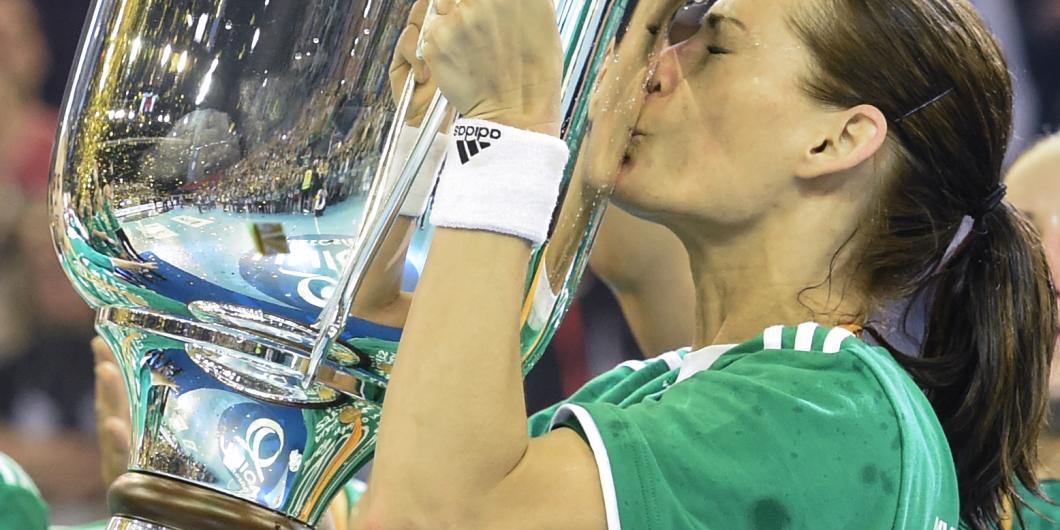“Thanks, Budapest! Thanks for your support. Thanks for playing here!“ Anita Görbicz was completely emotional, when she took the microphone in the Papp Laszlo Arena on 4 May 2014.
10,000 - mostly Hungarian - fans were cheering for Görbicz and her club, Audi ETÖ Györ, which made history that night as the first winner of an Women’s EHF FINAL4 in the Champions League.
The year before Görbicz & Co. had beaten Larvik in the old playing system with two final legs to win their first ever Champions league trophy.
In 2014, they defended their title in the new system, a FINAL4 event as the highlight of the season with two semi-finals, placement match and final within two days.
Györ lifted the trophy after beating Midtjylland in the semi-final and Buducnost in the final (27:21).
Milestone for women’s handball
Four years after the first VELUX EHF FINAL4 in the men’s competition, the new event was a complete success.
“This FINAL4 at Budapest was a milestone for the development of women’s handball, a true impetus for the future,” said EHF President Jean Brihault.
Together with the Hungarian Handball Federation and the company Hungarofest as organisers, the EHF had entered a new era.
10,000 fans on each day proved that fans were hungry for a tournament like this. 3000 more were standing in front of the arena to watch the matches on big screens.
In an initiative to further develop and strengthen women’s handball, the EHF, with inputs from the newly implemented Women’s Handball Board, decided to update the playing system from the start of the 2013/14 season and to create a Women’s EHF FINAL4 .
The changes made the competition more attractive not just to players and teams but also to fans, television stations and potential partners and sponsors.
And the media and TV interest of the first Women’s MVM EHF FINAL4 was huge, even US mega-seller Sports Illustrated covered the event as well as TV stations from more than 30 countries.
Budapest to host event through to 2019
After analysing the first edition of the FINAL4, Budapest was granted the right to host the two following events in 2015 and 2016.
And even though no Hungarian club managed to qualify for the 2015, the spectator interest was huge, when Buducnost took the title - and even topped in 2016, when again Györ made it to Budapest and then even the final again, finally and unluckily beaten by Bucuresti after a penalty shoot-out.
In September 2016, the EHF Executive Committee decided that Budapest will be the hosting city of the event until 2019 - thus the Papp Laszlo Arena latest now has the same status for women’s handball as the LANXESS Arena in Cologne for the men’s competition.
"By bringing together the top teams to play over two days here in Budapest we’ve created a major international event; this clearly shows what we can achieve and in turn creates new ideas and innovative concepts,” concluded Brihault.


